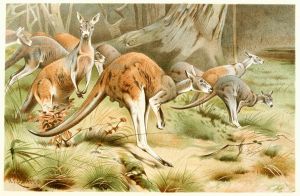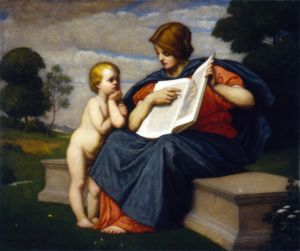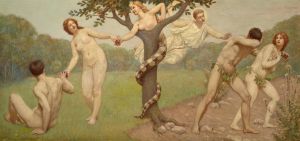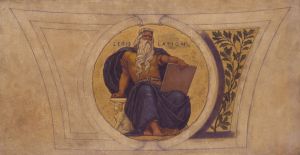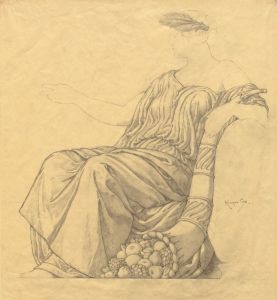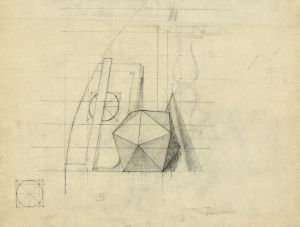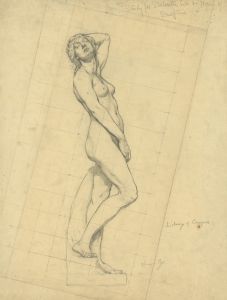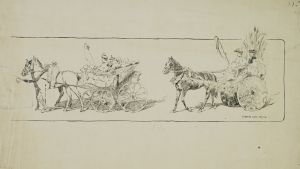
Zoology
A hand-painted replica of Kenyon Cox’s masterpiece Zoology, meticulously crafted by professional artists to capture the true essence of the original. Each piece is created with museum-quality canvas and rare mineral pigments, carefully painted by experienced artists with delicate brushstrokes and rich, layered colors to perfectly recreate the texture of the original artwork. Unlike machine-printed reproductions, this hand-painted version brings the painting to life, infused with the artist’s emotions and skill in every stroke. Whether for personal collection or home decoration, it instantly elevates the artistic atmosphere of any space.
Kenyon Cox (1856–1919) was an American painter, illustrator, muralist, and writer, known for his academic style and contributions to American art in the late 19th and early 20th centuries. One of his notable works is the painting "Zoology," which is part of a series of murals created for the Library of Congress in Washington, D.C.
The "Zoology" mural was completed in 1897 as part of Cox's commission to decorate the Jefferson Building of the Library of Congress. This building, which opened in 1897, was designed to be a grand repository of knowledge and culture, and its decoration was entrusted to some of the most prominent artists of the time. Cox was selected to contribute to the series of murals that would adorn the building, reflecting various branches of knowledge and learning.
"Zoology" is one of the four murals that Cox painted for the North Hall of the Library of Congress. The other three murals in this series are "Physics," "Astronomy," and "Geology." Each mural represents a different scientific discipline, showcasing Cox's ability to blend artistic beauty with educational themes.
In "Zoology," Cox depicted a central female figure representing the personification of Zoology. She is surrounded by various animals, symbolizing the diversity of the animal kingdom. The figure is shown in a classical style, reminiscent of ancient Greek and Roman art, which was typical of Cox's work. The animals in the mural are rendered with careful attention to detail, highlighting Cox's skill in both human and animal anatomy.
The mural is painted in oil on canvas and is characterized by its harmonious composition and muted color palette. Cox's use of light and shadow creates a sense of depth and realism, drawing the viewer's eye to the central figure and the surrounding animals. The overall effect is one of balance and serenity, reflecting the order and beauty of the natural world.
Kenyon Cox's work on the Library of Congress murals, including "Zoology," is considered a significant contribution to American art and public architecture. These murals not only enhance the aesthetic appeal of the Library but also serve an educational purpose, inspiring visitors to appreciate the various fields of knowledge they represent.
Cox's murals in the Library of Congress are a testament to his belief in the importance of art in public spaces and his dedication to creating works that are both beautiful and meaningful. "Zoology" remains an enduring example of his talent and vision, continuing to captivate and educate viewers more than a century after its creation.





